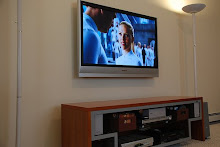Buying Guide to Plasma TVs
By Dave Kenyon
Plasma TVs and LCD TVs should not be confused with each other, as some people tend to do. Plasma televisions basically use a plasma discharge inside, compared to LCDs which uses a mercury based active matrix system. This TV tends to be more popular among households these days compared to LCD TVs and this is simply because of one thing; the price.
Usually, the price of a Plasma TV would be far cheaper than an LCD TV. This is due to the cost of producing the LCD display panel and the quality of the LCD display itself. Although in general the Plasma TVs resolution is not as good as an LCD TVs, it can still produce very sharp images compared to CRT TVs with the help of various technology.
Worthiness
Sometimes when it comes to buying Plasma TVs, many people do not really know the real aspects behind choosing the correct one. There are many different sizes of Plasma TVs, but when you choose one, make sure the TV does not take up too much space in your house.
This is because unlike LCD displays, even the smallest Plasma TV is 40 inches in dimension. And usually Plasma TVs come with a mounting stand, which nowadays are pretty fashionable compared to the TV itself. The TV is not usually beyond 4 inches in thickness, meaning to say that you can put it right next to your wall without anything next to it, and nobody will realize its even there.
One big difference about Plasma TVs in general compared to LCD TVs is the brightness of the picture as well as the response time of the moving images. Compared to LCD TVs, Plasma TVs are generally not so bright, but these days with so much improvement, the brightness has increased, and sometimes you cant even differentiate between the two.
Response time refers to the time that images take to shift from one frame to another, usually calculated in milliseconds. The lesser it is, or the faster it is, the better. This is because when it is faster, there wont be any ghostly images forming up when there are transitions from white images to black ones.
Another main aspect to consider when it comes to buying Plasma TVs would be the lifetime of the televisions. Usually the manufacturers guarantee a lifetime of 60,000 hours or sometimes more. These days, the lifetime has been extended up to 70,000 hours or even more in many cases. You have to make sure that your TV will last at least 60,000 hours before the brightness begins to fade and the images cant be seen properly.
What you should most definitely know about plasma tv before handing over your hard earned cash! Visit http://www.whichplasma.tv
Article Source: http://EzineArticles.com/?expert=DaveKenyon
http://EzineArticles.com/?Buying-Guide-to-Plasma-TVs&id=368803

1 comments:
November 26, 2008 at 2:55 PM
Selection in regards to 123 brackets is to purchase a tilting mount that it perfectly suited for any LCD TV which is situated closer to the ceiling of the room and it permits you to look upwards at the TV and also provides you the ability to tilt the screen in a downward direction to help improve the viewing angle of the screen.Another piece of advice would be to mount the bracket to a solid wall.tv wall mounts can be fitted to make efficient use of space in any room
Post a Comment